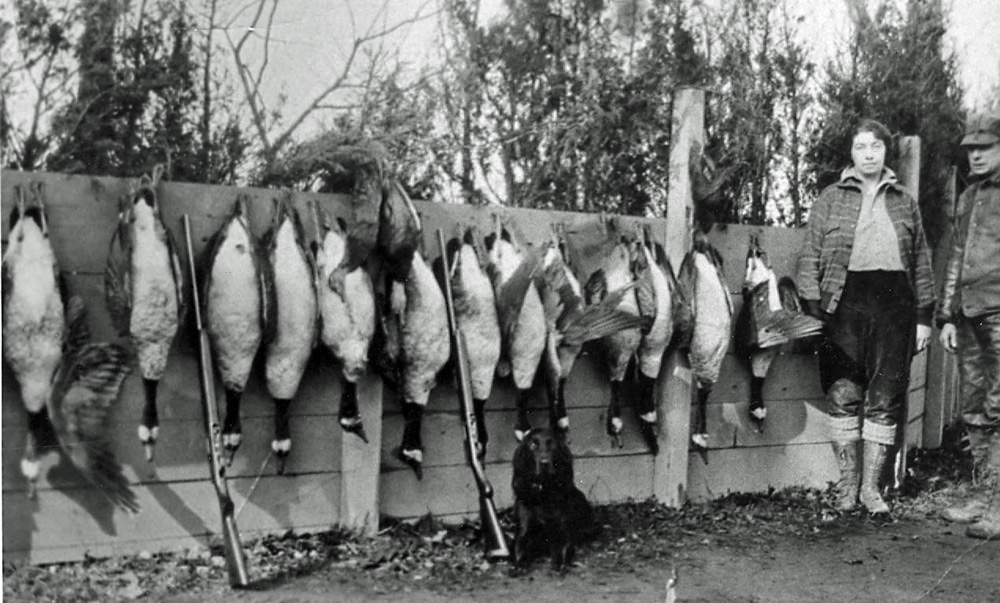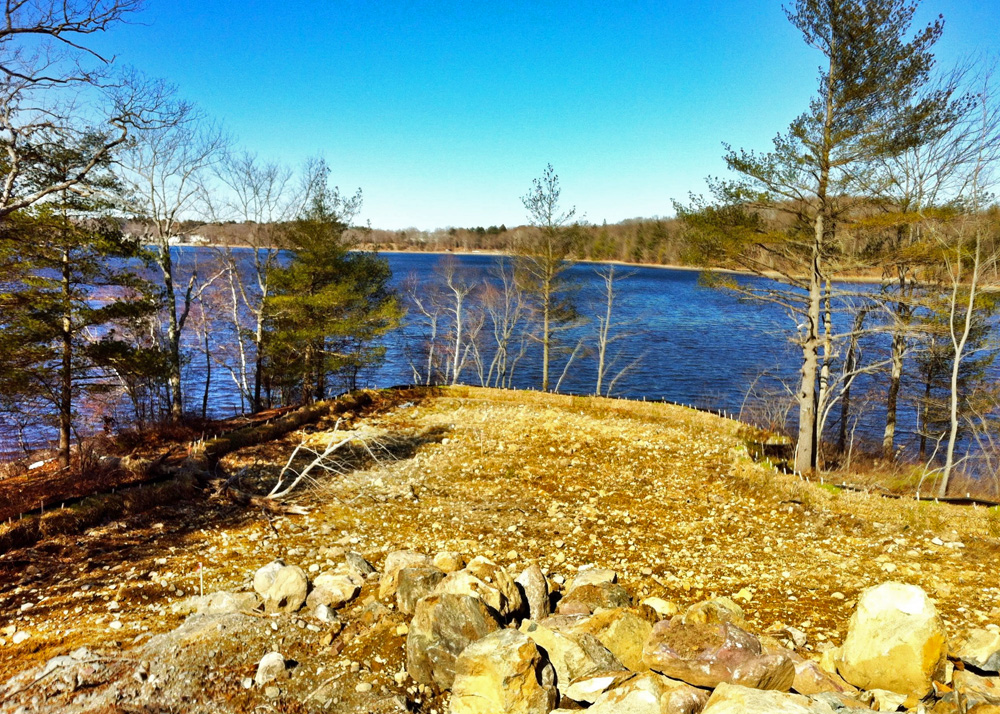True Tales from Canton’s Past: Birch Point Part II
By George T. ComeauClick here to go back to Part 1.
The two gun-crossed lovers were married the next spring, and from then on they were inseparable. Mrs. Jones, “Gussie” as she was called in the camp, vowed she would shoot as well as the boys, and in fact she would become an expert huntress at Birch Point.
The blind at Birch Point was built on three sides so that it was mostly surrounded by water. A four-and-a-half-foot fence was built, and notches were cut for gun rests. The view was superb across Reservoir Pond toward the dam on Pleasant Street. The beach was white sand, and live birds were used as decoys. Both ducks and geese were raised specifically for the purpose of luring in hunting fowl. The legs of the birds were fastened to swivel stakes and straps so they could walk free. Every few days the birds would be replaced by fresh birds from the pens kept behind the camp. The birds, domesticated for use as decoys, would become part of the success of Birch Point.
A typical entry of the camp diary in 1920 read: “Wind: East, Weather: Clear, Shot 14 Geese, By: Fred, Gus, Wallie, Charlie, Olaf, Mert and Bee. Remarks: Mainly by Jones, and possibly unprintable … Oh, those geese dropping out of the clear blue sky and sliding into the water less than a hundred yards away! The heavy roar of seven guns firing as one! The excitement that followed, the air full of feathers and geese and shot and wadding.” The boys at Birch Point were clearly in their element.
In fact, when Birch Point became well known, Jones advertised Wild Canada Geese for sale under the name Jones’ Birch Point Decoys. These “wild waterfowl specially bred for decoy purposes from hardy northern grown, trained hunting stock” were offered to sportsmen so they could use the breed for successful hunting. Jones created what he called the Birch Point Strains, those birds that exhibited the size, calling and flying qualities of superb live decoys.
The live decoys at Birch Point consisted of Wild Canada Geese (genuine honkers), Black Call Ducks, English Grey Calls, Belgian White Calls, Wild Mallard Ducks, and Wild Black Ducks. Each of these strains used to induce wild fowl within range of Birch Point. The birds that Jones sold were trained after one year of being “shot over” and well used to being decoys.
By 1922, a new blind was built at Birch Point and a hunting lodge was soon erected. Gussie Jones recalled, “It wasn’t just the shooting. It was all the things that went with it. A wonderful breakfast after hours in the blind. To see daylight break in a wild beautiful spot. To have laughing, happy companions, men that for the time being were just hungry boys. Pancakes and sausages and bacon with steaming coffee it had to be, nothing else would do.” The lodge was filled with mounted trophies. A goose flying from the rafters, a hooded merganser in flight — each animal telling a story and casting memories across the room.
So popular was the sport of gunning that a serious decline in the abundance of birds began to appear through the late 1920s, and the population dropped precipitously in 1930, as that year became known as the “duck depression.” State regulations that curtailed the number of live decoys — mainly to allow wild fowl stocks to recover — did little to produce more birds. In 1935 the federal government ordered that live decoys would be forbidden, thus ending the practice.
The Birch Point Gunning Club continued with the use of wooden decoys, but it would gradually decline. By the late 1950s, Ted Clines learned that some of the wooden decoys out at Birch Point were being used for firewood. Driving out to the camp, he made a deal to buy some of the antique decoys as well as classic guns and artifacts. Gussie Jones died in 1976, and the land was sold and now is about to be developed. Today, all that remains of Birch Point are a handful of photographs, the hunting diary, some advertisements for live decoys, and a nostalgic letter from Gussie Jones in 1971. Of course, there are more ducks at Reservoir Pond now, and it sure is quiet during hunting season.
Short URL: https://www.thecantoncitizen.com/?p=12044












